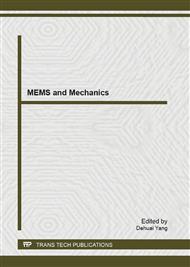[1]
B.Neumann, T.vonSydow, H.Blume, et al, Design flow for embedded FPGAs based on a flexible architecture template. Proceedings of Design, Automation and Test in Europe, 2008,pp.56-61.
DOI: 10.1109/date.2008.4484660
Google Scholar
[2]
J.Wu,V.Aken'Ova, S.Wilton, et al, SoC Implementation Issues for Synthesizable Embedded Programmable Logic Cores. Proceedings of the Custom Integrated Circuits Conference, 2003,pp.45-48.
DOI: 10.1109/cicc.2003.1249356
Google Scholar
[3]
V.Aken'Ova, R.Saleh, A "soft++" eFPGA physical design approach with case studies in 180nm and 90nm. IEEE Computer Society Annual Symposium on Emerging VLSI Technologies and Architectures, 2006,pp.103-108.
DOI: 10.1109/isvlsi.2006.1
Google Scholar
[4]
S.Wilton, N.Kafafi, J.Wu, et al, Design considerations for soft embedded programmable logic cores. IEEE Journal of Solid-State Circuits, 2005, 40(02),pp.485-496.
DOI: 10.1109/jssc.2004.841038
Google Scholar
[5]
N. Kafafi, K. Bozman, S. Wilton, Architecture and algorithms for synthesizable embedded programmable logic cores. ACM international symposium on FPGA,2003,pp.3-11.
DOI: 10.1145/611817.611820
Google Scholar
[6]
I.Kuon, A. Egier, J. Rose. Design, Layout and Verification of an FPGA using Automated Tools. ACM/SIGDA International Symposium on Field Programmable Gate Arrays - FPGA, 2005,pp.215-226.
DOI: 10.1145/1046192.1046220
Google Scholar
[7]
K. Padalia, R. Fung, M. Bourgeault, et al, Automatic transistor and physical design of FPGA tiles from an architectural specification. ACM international symposium on FPGA,2003,pp.164-172.
DOI: 10.1145/611817.611842
Google Scholar
[8]
V. Betz, J. Rose, VPR: A new packing, placement and routing tool for FPGA research[C]. ACM international symposium on FPGA, 1997,pp.213-222.
DOI: 10.1007/3-540-63465-7_226
Google Scholar
[9]
Information on http://university.altera.com/research/unv-quip.html.
Google Scholar
[10]
V. Betz, J. Rose, A, Marquardt.Architecture and CAD for Deep-Submicron FPGAs.Kluwer Academic Publishers, 01(1999) 38-67.
DOI: 10.1007/978-1-4615-5145-4
Google Scholar


